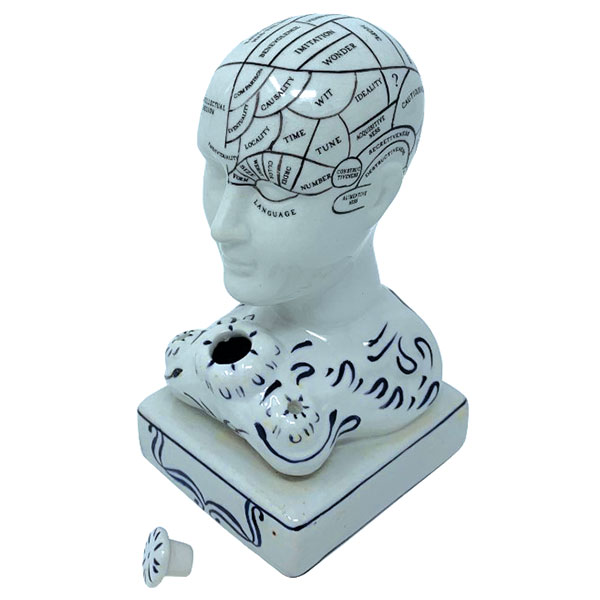We all know palm readers can tell you if you are intelligent, how many children you will have, or if you will live to a ripe old age from the lines in your hand. At least that is what palm readers say, even today. Phrenology was a medical theory promoted by a German doctor, Franz Josef Gall, in 1796. It stayed popular from 1810 to 1840 and is still accepted by some today. The bumps on your head could be read by a phrenologist and he would identify your intelligence, self esteem, character, and personality traits. The doctors demonstrated with a phrenology head, a pottery or porcelain model marked to show the regions of the brain that controlled your actions, thoughts or even health. It is amazing that modern brain scans prove there really are areas in our brains that control processing of information, anger, sadness, fear or other emotions. The phrenology theory was right, but the mapping of the head was wrong.
Antique phrenology heads, sometimes part of an inkwell for a doctor’s desk, sell today from $500 to thousands of dollars. But in the 1960s and ’70s, many fakes were made and are still in collections and sales. There are recent copies for sale for $30 to $150. Reproductions usually have a large (about a two-inch diameter) hole in the base; antiques have no hole. Originals usually have glazed bases. Newer heads, copies of originals, picture a man about 30 years old, bald, of course, with the map of the bumps printed on it. There are also a small number of old ones that picture a baby’s head or that of an old man.
A copy of a phrenology inkwell made in the 1970s. The inkwell base has a matching stopper in front of the head.




Leave a Reply
You must be logged in to post a comment.